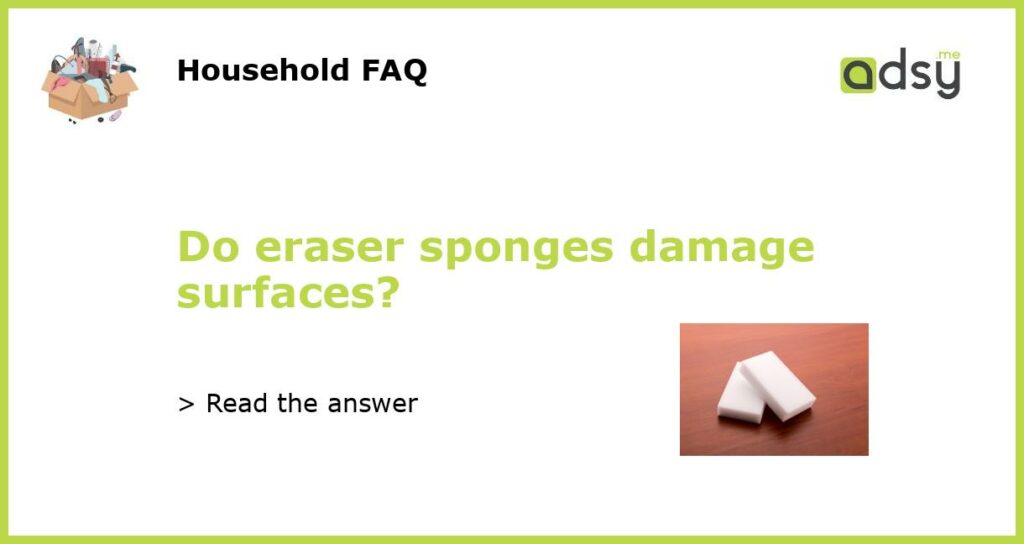Introduction
Eraser sponges are a popular cleaning tool used to remove tough stains and marks on surfaces. However, there have been conflicting opinions about whether these sponges damage surfaces or not. In this article, we will explore the science behind eraser sponges and the potential damage they can cause.
How Do Eraser Sponges Work?
Eraser sponges are made from a melamine foam material that has the ability to remove dirt, grime, and stains from surfaces with just water. When the sponge is wet, the microscopic pores in the foam material create an abrasive surface that acts like a fine grit sandpaper. This allows the sponge to gently lift away dirt and stains without scratching the surface.
What Surfaces Can be Cleaned with Eraser Sponges?
Eraser sponges can be used on a variety of surfaces, including walls, floors, countertops, and appliances. However, it is important to note that the effectiveness of the sponge can vary depending on the surface. For example, eraser sponges work well on surfaces with a smooth finish, but may not be as effective on textured surfaces like stucco or raw wood.
Can Eraser Sponges Damage Surfaces?
While eraser sponges are typically safe to use on most surfaces, there is a potential for them to cause damage if not used correctly. If too much pressure is applied or the sponge is used on delicate surfaces like painted walls or varnished wood, it can leave behind scuff marks or remove the finish. Additionally, overuse of eraser sponges can wear down the surface of the material, making it more prone to damage over time.
Tips for Using Eraser Sponges Safely
To avoid potential damage, it is important to use eraser sponges carefully and follow these tips:
- Wet the sponge thoroughly before using it on a surface
- Test the sponge on an inconspicuous area first to ensure it doesn’t damage the surface
- Use light pressure and a gentle scrubbing motion
- Rinse the surface with water after cleaning
- Do not use the sponge on delicate surfaces or surfaces with a non-smooth finish






